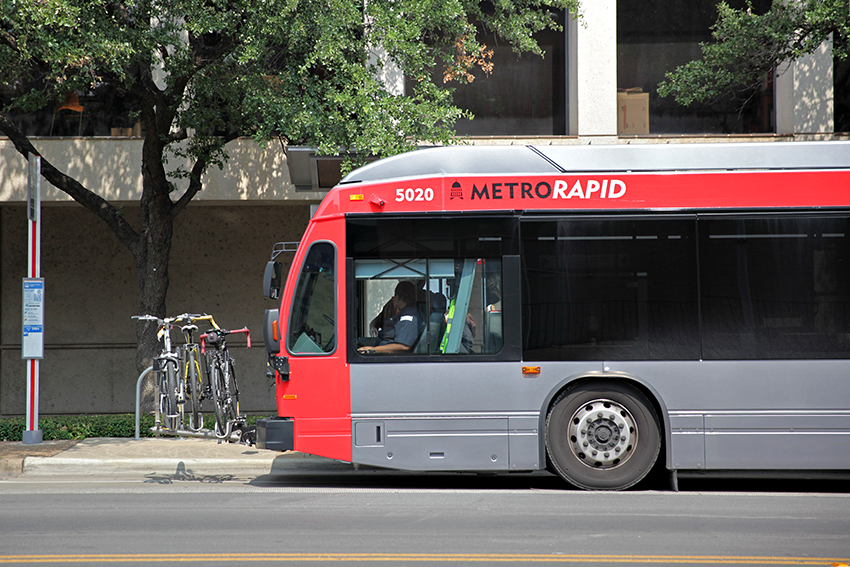Economics junior Kate Dopkin is just one of many UT students who relies upon the city bus system to explore Austin.
“I lived on campus and didn’t feel like I needed (a car) because most of the places I went were near campus,” Dopkin said. “It was intimidating at first, but the Austin bus system is pretty easy to figure out, and the Cap Metro app really helped.”
Of the approximately 50,000 students enrolled in the University, there were only 13,029 parking permits sold during the 2015 school year, according to Parking and Transportation Services, making students like Dopkin, who said she relied on the bus to attend off-campus events like concerts and to get to H-E-B, common.
This is made possible because of an approximately $6 million agreement each year between the University and the Capital Metropolitan Transit Authority, Austin’s public transit provider, that allows all UT students, faculty and staff to use Cap Metro’s services for free with a valid UT ID.
PTS Assistant Director Blanca Gamez said in an email the agreement gives students “fare free access to all of Cap Metro’s services” including UT shuttles, cross-city bus routes and the Cap Metro commuter train. The partnership is paid for using funds from the Student Services Fee that each student pays as a part of their tuition, Gamez said.
Dopkin said once she brought a car to campus her second year, she used the bus occasionally to get to her car which was often parked in a lot on the east side of I-35, but mainly used her car to get around Austin. However, having access to the bus services remained helpful, Dopkin said.
“I still take the bus when I’m going places downtown, though, because parking is expensive and hard to find,” Dopkin said. “I take the 40 Acres bus occasionally to get across campus when I don’t feel like walking.”
Mariette Hummel, a spokesperson for Cap Metro, said the University pays a fixed portion of the operating cost of each UT shuttle service hour, which is around $4.8 million, and 58 percent of the base fare for all ID swipes on other services, but starting Sept. 1, UT will begin paying 62 percent of the fare for ID swipes.
Hummel said Cap Metro projects 2.8 million rides were paid for using ID swipes, or approximately 2 million student rides and 800,000 faculty rides for the contract year, which ends at the end of August.
“Capital Metro and the University have partnered on campus transit issues for almost 30 years,” Hummel said in an email. “All of Capital Metro’s services are a good resource for students. Which service works best for you depends a lot on where you live.”
Dopkin said for next year, she plans to take the shuttle to and from her off-campus apartment, and that her good experiences with the bus system encourage her to ride more frequently.
“Depending on where I’m going, it can be easier and faster drive my car, but the bus system is cheaper and more environmentally friendly, so I feel like I should make an effort to use it more,” Dopkin said.




















